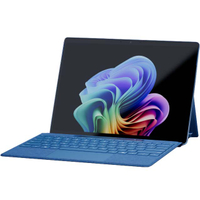Microsoft Copilot+ PC FAQ: What it is, features, how to access it, and PC requirements
Microsoft Copilot+ is only available on AI PCs.
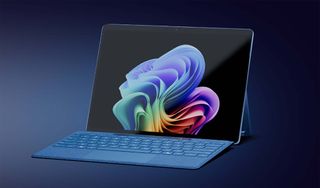
During the Microsoft Event 2024 keynote, the company unveiled Copilot+ and discussed how next-gen AI features go hand-in-hand with AI PC laptops. Despite having a name similar to that of the Copilot AI assistant, Copilot+ is very different and encompasses several different things rather than one specific service.
So, just what is Copilot+? Does it cost money to use? What features does Copilot+ have? How is Copilot+ different from plain old Copilot? How can I get a Copilot+ PC? We'll discuss all that and more.
Microsoft Copilot+: What is it?
What is Microsoft Copilot+?
Microsoft Copilot+ is a term meant to encompass several different next-gen AI functions made available locally on AI PCs that run Windows. These AI features come with new "Copilot+ PCs," and they provide enhanced AI experiences such as being able to scroll back through your viewing history to see things you've looked at before, locally generate AI images, make advanced edits locally within creative software like Adobe Photoshop, and more.
Microsoft specifically says that "Copilot+ PCs are optimized to run AI workloads locally with better performance, featuring 8 high performance cores and 4 efficiency optimized cores in the built-in CPU within the X Elite."
Is Copilot+ the same as Copilot Pro?
No. They are very different things. Copilot Pro is the subscription service for additional AI assistant features. Meanwhile, Copilot+ is a broad term for several next-gen AI features from Microsoft that are only possible on AI PCs. that run Windows.
Microsoft Copilot+: Price

How much does Microsoft Copilot+ cost?
You don't need to pay a subscription or make any software purchases to gain access to Microsoft Copilot+. However, Copilot+ only comes preinstalled on "Copilot+ PCs," which start launching in June 2024. So you will need to have one of these new AI PCs that run Windows to use Copilot+.
Best Copilot+ PCs
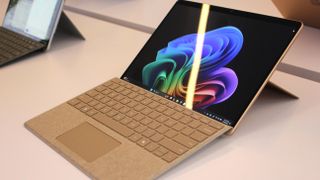
Copilot+ PCs and laptops were first introduced to the market in June 2024. As time goes on, we'll be seeing more and more of these devices on shelves. Our number one pick for the best Copilot+ PC is the Surface Pro 11 also called the "new Surface Pro." You can purchase the Surface Pro 11 starting at $999.99 at Best Buy.
For additional recommendations and a breakdown of each device's pros and cons, check out our list of the best Windows on ARM laptops (many of which are also Copilot+ PCs).
Microsoft Surface Pro 11 | Starting at $999.99
The Surface Pro 11 is a 2-in-1 laptop and a Copilot+ PC. It features a Snapdragon X Plus or X Elite processor with various configuration options including the choice between an OLED or an LCD display.
Microsoft Copilot+: Features

What features does Copilot+ provide?
Rather than being tied to specific software, Copilot+ encapsulates several different next-gen AI features that are only available on AI PCs. This includes local AI photo and video editing, enhanced Windows Studio Effects, local AI image generation, the ability to scroll across a timeline of things you've previously looked at, and more.
Additional Copilot+ AI features on AI PCs allow you to:
- Recall anything you've previously seen and scroll through it on a timeline
- Note: this feature has been postponed due to major backlash
- Create enhanced AI edits in compatible Adobe programs
- Provide Live Caption translations in real time
- Suggest visual and contextual edits based on what's on your screen
- Empower local image and text generation with Cocreator in near real-time
- Grant access to advanced Windows Studio Effects
- Produce generative AI locally in a more secure and private capacity
How is it Copilot+ different from Copilot?
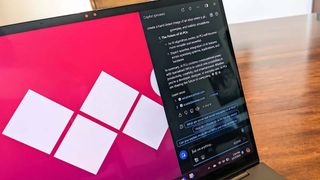
How is Microsoft Copilot+ different from Copilot?
Microsoft Copilot is an AI assistant that people can access via the cloud. For instance, you might ask Copilot to write up an essay outline, and then a distant server generates that outline for you before displaying it on your computer. Meanwhile, Copilot+ is a term that encompasses several next-gen AI features that can be done locally on an AI PC in various programs. For instance, anyone using a Windows laptop with an AI-boosting NPU can access additional AI features in Adobe programs, DaVinci Resolve Studio, CapCut, Windows Studio Effects, and more.
Microsoft Copilot+: Performance
In an interview with Wall Street Journal (which you can watch embedded above), Microsoft CEO Satya Nadella talks Copilot+ PCs and discusses how they not only "beat Apple's Macs" but also bring real competition back to the Windows versus Mac discussion.
Get the Windows Central Newsletter
All the latest news, reviews, and guides for Windows and Xbox diehards.
So what exactly is Copilot+ PC performance like? According to Microsoft, these AI PCs' AI-boosting NPUs (Neural Processing Units), make these laptops very fast and efficient. For instance, Microsoft says its new AI PC Surface laptops and other Windows AI PCs with Copilot+ are 58% faster than Apple's MacBook Air M3.
Are Copilot+ PCs faster than Apple MacBook Air M3?
Yes. According to Microsoft, Copilot+ PCs (AI PCs with Windows) are 58% faster than Apple's most powerful MacBook Air M3 laptop.
Microsoft Copilot+: PC Requirements

What are the Microsoft Copilot+ PC requirements?
Only Windows AI PCs with an NPU (Neural Processing Unit) capable of 40 TOPS (trillion operations per second) or higher are compatible with Copilot+.
How do I get Microsoft Copilot+?
Microsoft Copilot+ AI features come preinstalled on AI PCs that Microsoft labels as "Copilot+ PCs." Companies selling Copilot+ PCs include Acer, ASUS, Dell, HP, Lenovo, and Samsung.
Here are some AI PC laptops that come with Copilot+ (in alphabetical order):
- Acer Swift 14
- ASUS Vivobook S 15
- Dell XPS 13
- Dell Inspiron 14 Plus & Dell Inspiron 14
- Dell Latitude 7455 & Dell Latitude 5455
- HP OmniBook X
- HP EliteBook Ultra G1q
- Lenovo Yoga Slim 7x
- Lenovo ThinkPad T14s Gen 6
- Microsoft Surface Laptop 7
- Microsoft Surface Pro 11
- Samsung Galaxy Book4 Edge
How do I get Copilot+ on my PC?
Copilot+ is the term for several different next-gen AI features that only work on a computer with an NPU (Neural Processing Unit) that's capable of 40 TOPS or higher. You'll be able to access its various features in a number of different ways, not just by opening one program. For instance, Copilot+ PCs optimize AI tools in Adobe programs like Photoshop, Lightroom, and Express. More programs will be made compatible with these Copilot+ capabilities as time goes on.
Remember, if you don't have an AI PC, you cannot access Copilot+ AI features.
Micorosoft Copilot+: Release date
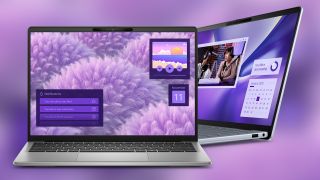
When does Copilot+ launch?
Copilot+ PCs started launching on June 18, 2024, beginning with Surface devices. After that, various manufacturers will launch additional Windows AI PCs with Copilot+ support.
Stepping into our AI future
Over the last few years, different tech companies have been vying for control over the AI market. Now that Microsoft has announced Copilot+, it is once more solidifying its role as an AI machine learning leader. Integrating next-gen AI features locally throughout the AI PC experience is definitely one way to stay relevant.
I know I'm excited to see what kind of additional edits this allows me to make in Adobe Photoshop or Premiere Pro. There are sure to be additional announcements for Microsoft Copilot+ as time goes on and we'll be sure to update this page as they come.

Self-professed gaming geek, Rebecca Spear, is one of Windows Central's editors and reviewers with a focus on gaming handhelds, PC gaming, and laptops. When she isn't checking out the latest games on Xbox Game Pass, PC, ROG Ally, or Steam Deck; she can be found digital drawing with a Wacom tablet. She's written thousands of articles with everything from editorials, reviews, previews, features, previews, and hardware reviews over the last few years. If you need information about anything gaming-related, her articles can help you out. She also loves testing game accessories and any new tech on the market. You can follow her @rrspear on X (formerly Twitter).

